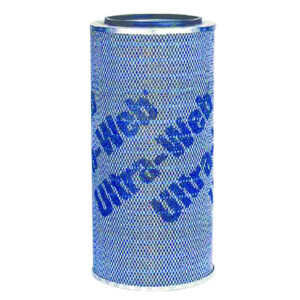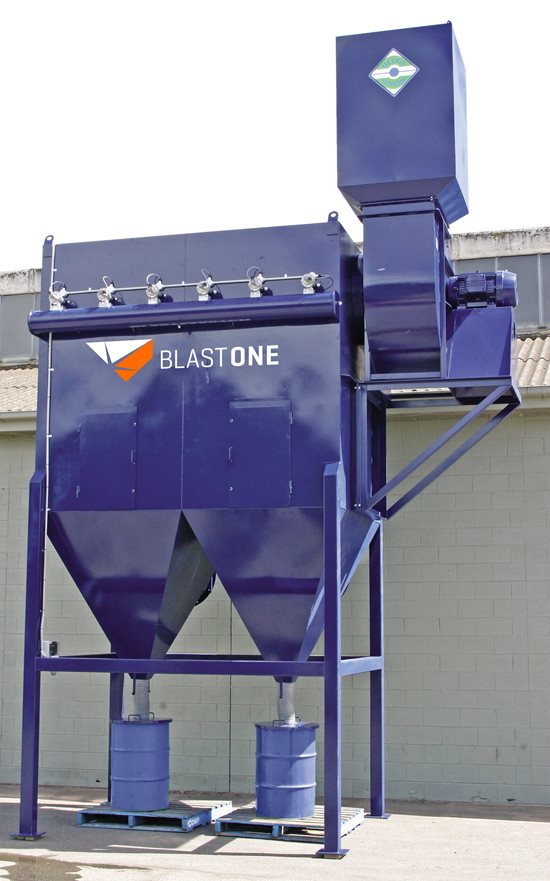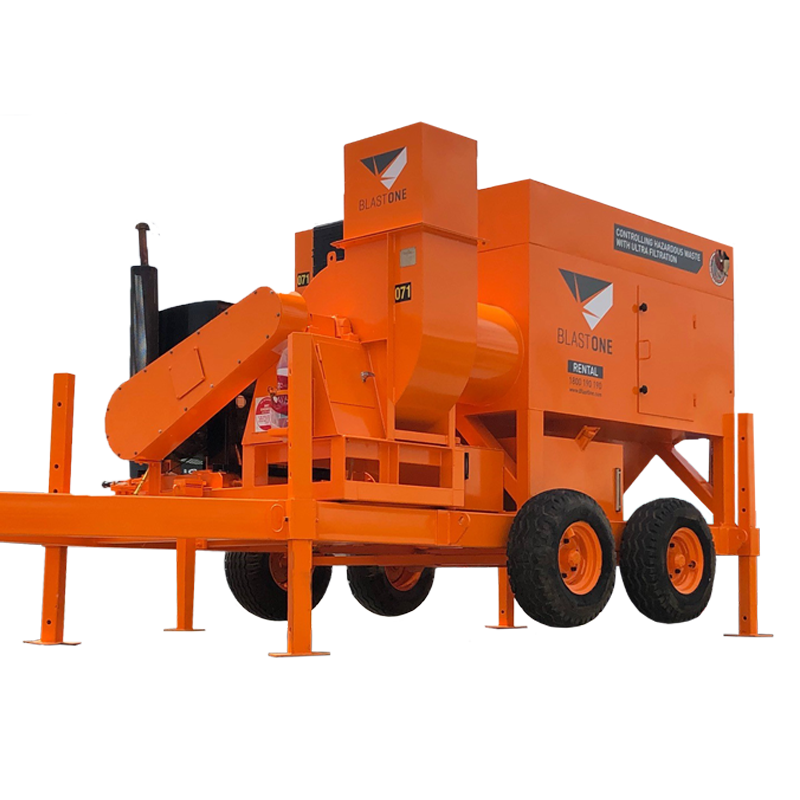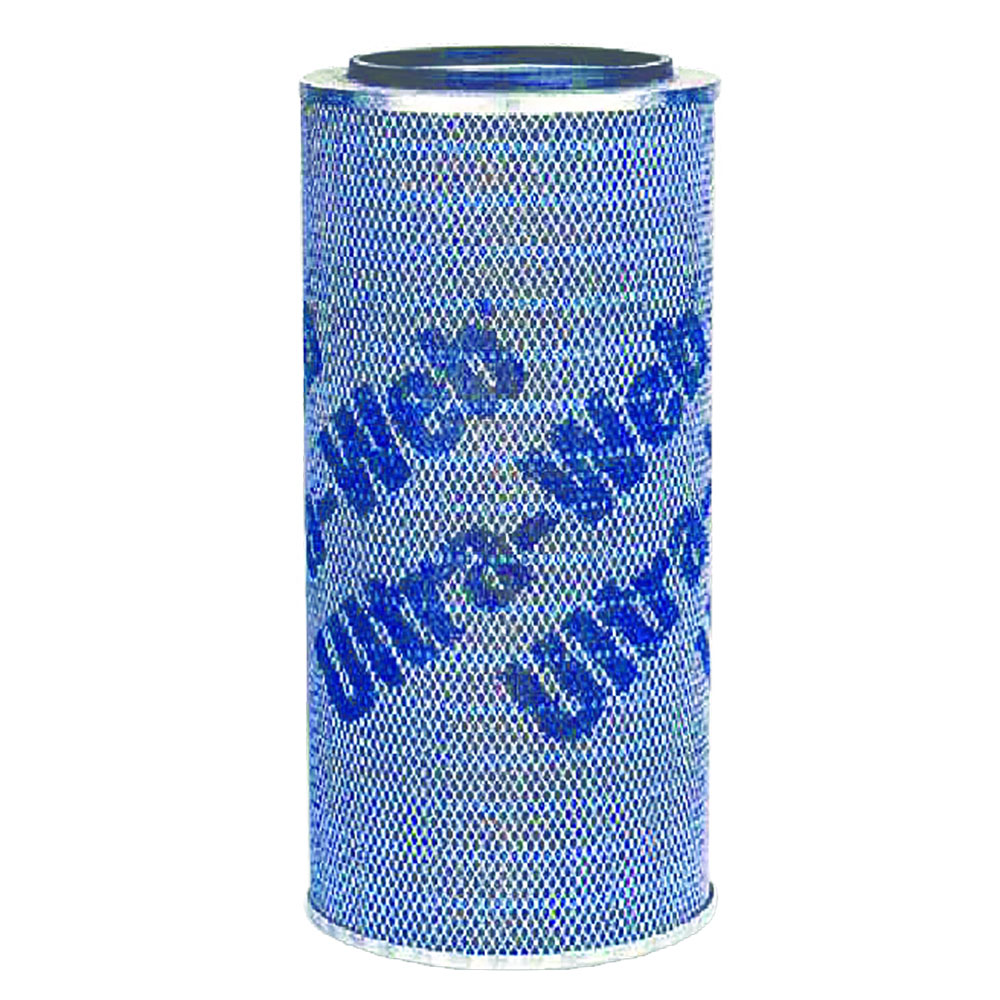What Size Dust Collector Do You Need?
SIZE is only 25% of the Solution!
Most facility Managers believe the size of the dust collector (CFM – cubic feet per minute) is the most important criteria in reducing dust. Although size is important, it is not the most critical variable. PLACEMENT is actually just as important if not more important than size.
It is quite possible to spend a great sum of money on a large dust collector, only to have it be inefficient due to its placement and the placement of the intake plenums.
BlastOne has over 40+ years experience in the engineering, design, and installation of Paint Booths and Blast Rooms. We are experts at determining size and configuration to maximize effectiveness. Blaster Safety and your profitability are hinged upon the clarity of the blast environment. Don’t buy a dust collector without having our expertise guide you through the process.
AIRFLOW AND VENTILATION
For maximum efficiency, the air should enter the room at one end and exit at the opposite end. However, if the chamber is rectangular and the air enters on one long side and exits on the other long side, the speed of airflow will be low, unless you implement incredibly powerful or multiple dust collectors. If air speed is low, dust will settle on the floor, and the next time the blast is pointed toward the dusty area the air flow will pick it up again, and again, and you will create your own dust storm. This point cannot be stressed enough.
As it is common for the dust collector to be at the opposite end to the entry, vents are frequently embedded in the entrance doors. Such positioning helps prevent dead spots where airflow is low and dust settles on the floor. (Note: Vents in the roof just inside the doors create dead spots where dust can settle.) These entrance door vents are typically positioned just above floor level.
Additional vents may be necessary and can be either higher up or added to each side of entry where wall space is available. The inlet air vents are best made so that air can pass in without undue restriction but also to prevent abrasives from escaping.
WHY USE A DUST COLLECTOR?
VISIBILITY AND PRODUCTIVITY
Dust collection units are an important component for blasting site environmental and personnel safety. The removal of dust and other hazardous air particles protects the employees on site, while also preventing harmful contaminates from escaping into the atmosphere without relying on personal respiratory equipment alone.
Blasting project sites that include containment measures, like scaffold and sheeting or a fully engineered blasting facilities experience, during blasting, that abrasive particle and coating dust will build up within the containment area and seriously reduce visibility and healthy breathable air. Installation and implementation of dust extraction units with high quality filtration system are the solution for overcome these hazards conditions.
HEALTH AND ENVIRONMENTAL CONCERNS
There is growing environmental concern with the dust generated by abrasive blasting. Many older coatings contain a high percentage of lead which when pulverized into powder by abrasive blasting can form a hazardous and toxic dust. Company legal obligations on project sites are now requiring that a full dust-tight containment structure encapsulates all blasting operations to minimize the danger to personnel and the environment.
A dust collector is used to provide ventilation inside containment structures to maintain operator visibility and maintain the encapsulated area under a negative pressure. It is also important to dilute the levels of hazardous substances within the contained area to levels below the minimum requred protection factor for personnel within, as well as respirator equipment limitations.
Facility (Fixed) Dust Collectors
Permanent Blasting Facilities
Fixed dust collection units are typically installed into blasting chambers, rooms or consistent single site installation projects that produce dust and fume extraction for multiple processes. From coating application and blast surface preparation, fabrication, repair shops, manufacturers and general facilities processes that produce high levels of hazardous dust or chemical fumes.
Single site dust collection units typically run off electric motors setup into a different configuration than the mobile dust collection units.
Dry Type Dust Collectors
Dry type dust collectors use a cartridge filter with a large surface area to provide excellent airflow coupled with fine filtration. A unique compressed air powered system known as ‘Sonic Impact’ is employed to shake and remove dust from the filter and this maintains filter efficiency and airflow performance.
The ‘Sonic Impact’ system incorporates a sequential timer which activates a solenoid valve sending a “shockwave” through the element or cartridge so that dust which has accumulated on the outside will be released and fall away, even while the dust collector is operating. The pulse will continue for several cycles after the dust collector fan is turned off to ensure cleaning is complete.
Today, dry type units use elements not unlike large truck type air filter elements, and whichever filter medium is used, the cost of replacement needs to be considered when ascertaining service life. Fines and dust are collected in a waste drum and need to be disposed of thoughtfully, this can be a hazardous job, but is made easy via our simple lever-action drum release system.
Dry type units are better suited to situations where dust concentrations are lower, hence they are used in blast rooms using steel or chilled iron and not where high levels of dust are common from the items being blasted, i.e. From heavily rusted steel etc. Increasing the pulse frequency will help if dust generation is increased.
Dry type systems are suitable for most situations.
Wet Scrub Type Dust Collectors
Not to be confused with water spray type units, the wet scrubber passes the dusty air below water level, literally scrubbing the air. The dust is entrained in the water and after passing a series of baffles that removes the moisture before being exhausted to atmosphere.
Wet type units can cope with large volumes of dust and because there are no elements to clog, air flow remains fairly constant which is always important. In other words, the water can become extremely dirty before any appreciable difference occurs. A small amount of detergent added to the water helps prevent solidifying of steel dust in the water. Clean out is easiest if done regularly, and a truck with heavy duty suction facilities used on water tanks or septic tanks makes a clean-out easier. Manual cleaning may be necessary to get the last portion out.
Running (power) costs are usually similar to dry type units.
Mobile Dust Collectors
Mobile dust collection units can be moved quickly from project site to project site. Mobile dust collectors are typically run from large diesel powered mobile engines. Mobile dust collection units achieve mobility by being mounted to highway rated trailers or a heavy duty mobile skid that is liftable by forklift or crane.
Mobile dust collection units are typically complete systems that will include extraction fan, filter chamber, inlet plenum and dust capture and removal facilities.
Case Study
Pipe Fabricator Converts Extreme Safety Liability To Thriving Blasting Hub
BACKGROUND
CB&I’s blast booths were in a state of disrepair that proved problematic to worker safety and production. The doors to the blast booths didn’t operate properly and their exhaust system was choking the airflow, putting enormous strain on their dust collector equipment.
OBJECTIVES
CB&I wanted to find a way to strategically upgrade their existing facilities to address safety concerns and regulations, improve air ventilation, and increase production—without having to tear down and completely replace their existing booths.
SOLUTIONS
BlastOne designed and implemented a plan to upgrade CB&I’s current facilities in a way that would comply with safety standards, improve working conditions, and increase the facilities’ durability.
The upgrades to the facilities included:
- Newly installed doors to keep blasting environment isolated.
- Exhaust plenums designed to increase airflow in the booth.
- Reduced debris collection in light fixtures to improve visibility.
RESULTS
CB&I is extremely pleased by the results of the project. The upgrade saved them over $500,000 by not having to completely replace their blast booths.
Their dust collection improvement changed the visibility in the booth. The upgrades solved their safety concerns and produced a significant boost to blasting throughput.
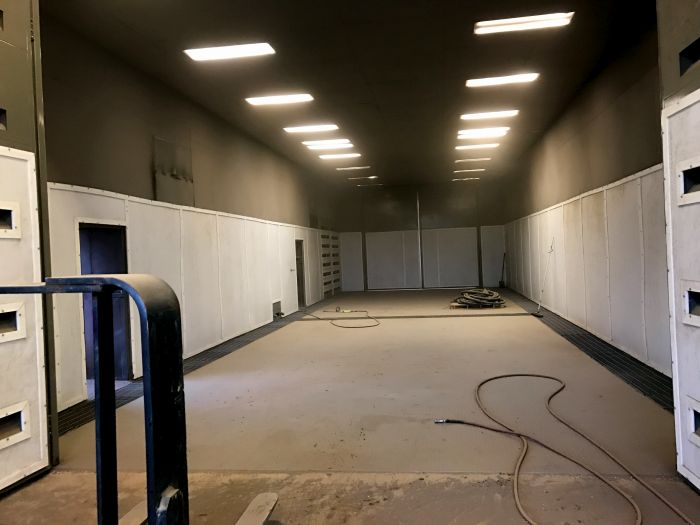
 My Account
My Account



